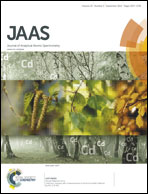Sintering nano-crystalline calcite: a new method of synthesizing homogeneous reference materials for SIMS analysis
Abstract
Reference materials play a crucial role in high accurate isotope and trace element analysis by secondary ion mass spectrometry, and they are used to calibrate instrumental fractionation of samples with various compositions. However, it is often a challenge to prepare natural or synthetic reference materials that are homogenous on a micron or even sub-micron scale. We report a novel method to synthesize homogeneous reference materials via sintering nano-crystals. Coarse-grained crystals (100–500 μm) of calcite have been grown from a starting material of 20–40 nm calcite powder at 1000 °C and 1 GPa for 24 h, which is ∼400 °C below the liquidus line of calcite under the same pressure. The non-molten sintering process and high temperature of the experiments ensure a homogeneous composition of the synthesized calcite. In situ analysis of 18O/16O ratios of the synthetic calcite with a Cameca NanoSIMS 50L revealed no detectable variation within the analytical uncertainty (0.5‰, 1SD), which was further confirmed using a Cameca IMS 1280 with a higher precision (0.1‰, 1SD). In addition, trace elements, Sr and P, are also homogeneous in the synthetic calcite. Another important advantage of this method is that the compositions of synthetic reference materials can be accurately and conveniently determined from the bulk starting materials using independent analytical techniques.


 Please wait while we load your content...
Please wait while we load your content...